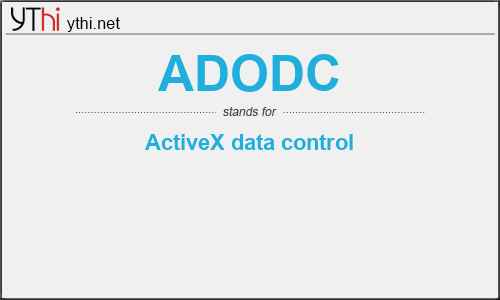What does ADODC mean? What is the full form of ADODC?
The Full Form of ADODC is ActiveX data control.
ActiveX Data Objects is a programming model, which means that it is not dependent upon any given back-end engine. Currently, however, the only engine supporting the ADO model is OLE-DB. There are many native OLE-DB Providers as well as an OLE-DB Provider for ODBC. ADO is used in C++ and Visual Basic programs to connect to SQL Server and other databases. Of course, it also works to connect to Azure SQL Database in the cloud.
ADO.NET is different than ADO. ADO.NET, and many other SQL connection drivers and their languages, are discussed starting at SQL Server Drivers.
Microsoft ActiveX Data Objects (ADO) enable your client applications to access and manipulate data from a variety of sources through an OLE DB provider. Its primary benefits are ease of use, high speed, low memory overhead, and a small disk footprint. ADO supports key features for building client/server and Web-based applications.
In computing, Microsoft’s ActiveX Data Objects comprises a set of Component Object Model objects for accessing data sources. A part of MDAC, it provides a middleware layer between programming languages and OLE DB
The ADO (ActiveX Data Object) data control is the primary interface between a Visual Basic application and a database. It can be used without writing any code at all! Or, it can be a central part of a complex database management system. This icon may not appear in your Visual Basic toolbox. If it doesn’t, select Project from the main menu, then click Components. The Components window will appear. Select Microsoft ADO Data Control, then click OK. The control will be added to your toolbox.
• As mentioned in Review and Preview, previous versions of Visual Basic used another data control. That control is still included with Visual Basic 6.0 (for backward compatibility) and has as its icon:
ADODC
means
ActiveX data control![]()
Translate ActiveX data control to other language.


Leave a Reply
You must be logged in to post a comment.